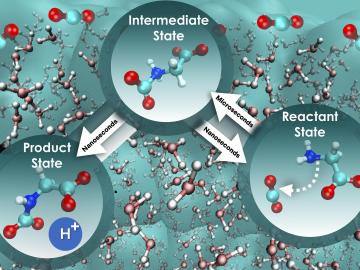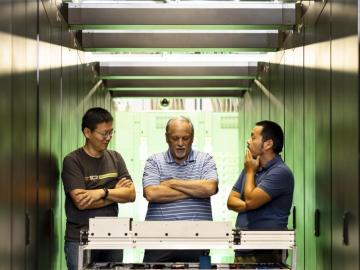
Filter News
Area of Research
News Topics
- (-) Cybersecurity (12)
- (-) Frontier (19)
- (-) Isotopes (17)
- (-) Security (10)
- (-) Space Exploration (6)
- (-) Summit (11)
- (-) Transportation (25)
- 3-D Printing/Advanced Manufacturing (25)
- Advanced Reactors (4)
- Artificial Intelligence (27)
- Big Data (11)
- Bioenergy (24)
- Biology (30)
- Biomedical (12)
- Biotechnology (6)
- Buildings (14)
- Chemical Sciences (24)
- Clean Water (6)
- Composites (9)
- Computer Science (37)
- Coronavirus (4)
- Critical Materials (7)
- Education (3)
- Emergency (1)
- Energy Storage (23)
- Environment (46)
- Exascale Computing (15)
- Fossil Energy (2)
- Fusion (13)
- Grid (19)
- High-Performance Computing (33)
- Hydropower (3)
- Irradiation (2)
- Machine Learning (15)
- Materials (59)
- Materials Science (26)
- Mathematics (2)
- Mercury (3)
- Microelectronics (2)
- Microscopy (12)
- Molten Salt (5)
- Nanotechnology (16)
- National Security (21)
- Neutron Science (42)
- Nuclear Energy (31)
- Partnerships (24)
- Physics (23)
- Polymers (9)
- Quantum Computing (12)
- Quantum Science (12)
- Simulation (29)
- Software (1)
Media Contacts

Four researchers at the Department of Energy’s Oak Ridge National Laboratory have been named ORNL Corporate Fellows in recognition of significant career accomplishments and continued leadership in their scientific fields.

Within the Department of Energy’s National Transportation Research Center at ORNL’s Hardin Valley Campus, scientists investigate engines designed to help the U.S. pivot to a clean mobility future.

Lee's paper at the August conference in Bellevue, Washington, combined weather and power outage data for three states – Texas, Michigan and Hawaii – and used a machine learning model to predict how extreme weather such as thunderstorms, floods and tornadoes would affect local power grids and to estimate the risk for outages. The paper relied on data from the National Weather Service and the U.S. Department of Energy’s Environment for Analysis of Geo-Located Energy Information, or EAGLE-I, database.

Recent research by ORNL scientists focused on the foundational steps of carbon dioxide sequestration using aqueous glycine, an amino acid known for its absorbent qualities.

Researchers from institutions including ORNL have created a new method for statistically analyzing climate models that projects future conditions with more fidelity.

ORNL's Climate Change Science Institute and the Georgia Institute of Technology hosted a Southeast Decarbonization Workshop in November that drew scientists and representatives from government, industry, non-profits and other organizations to

Used lithium-ion batteries from cell phones, laptops and a growing number of electric vehicles are piling up, but options for recycling them remain limited mostly to burning or chemically dissolving shredded batteries.

The team that built Frontier set out to break the exascale barrier, but the supercomputer’s record-breaking didn’t stop there.

Making room for the world’s first exascale supercomputer took some supersized renovations.

Researchers used the world’s first exascale supercomputer to run one of the largest simulations of an alloy ever and achieve near-quantum accuracy.


